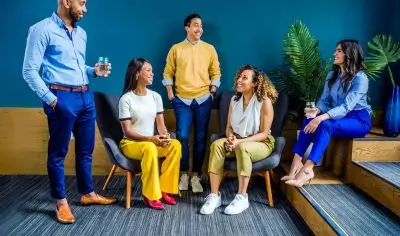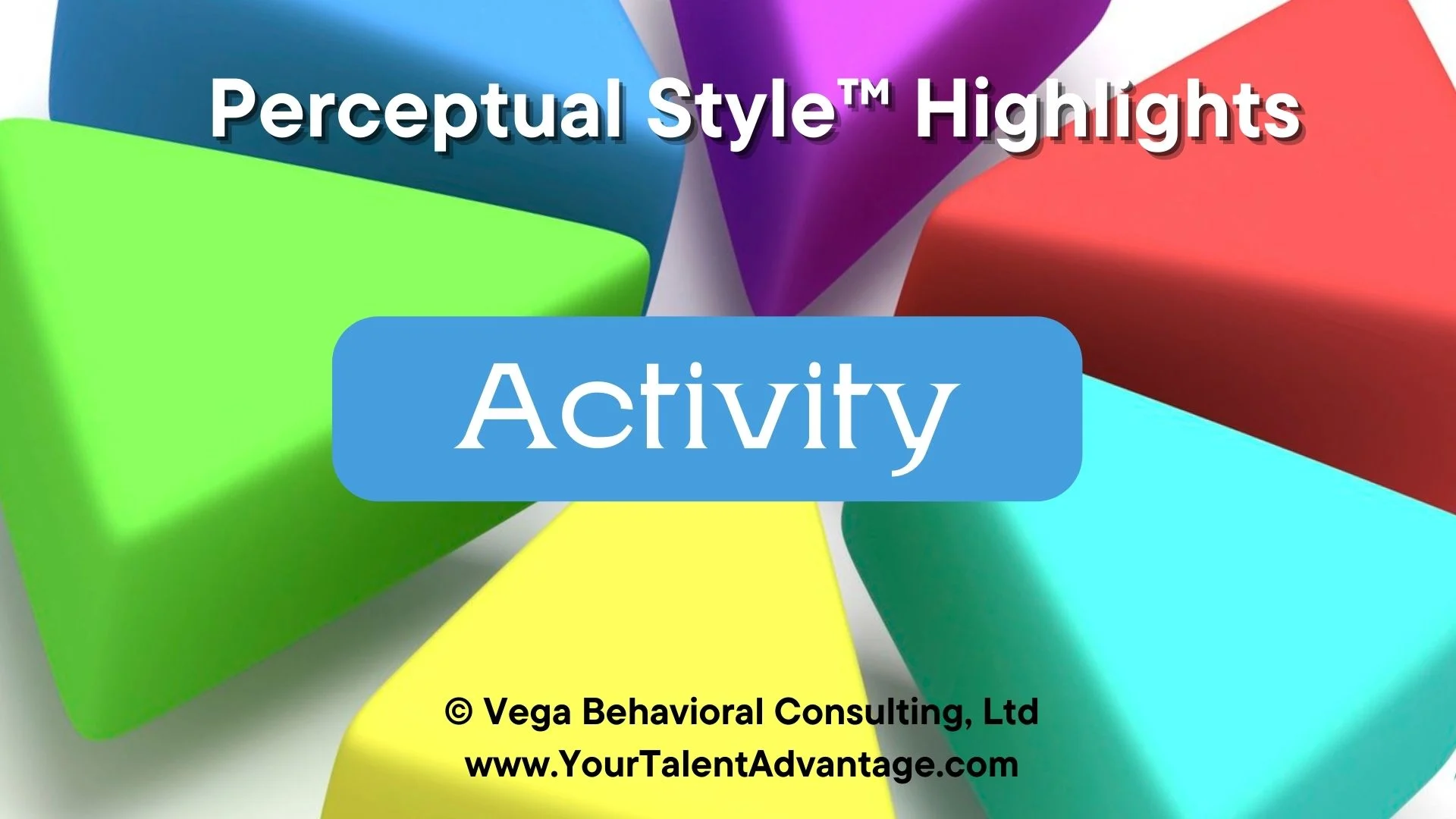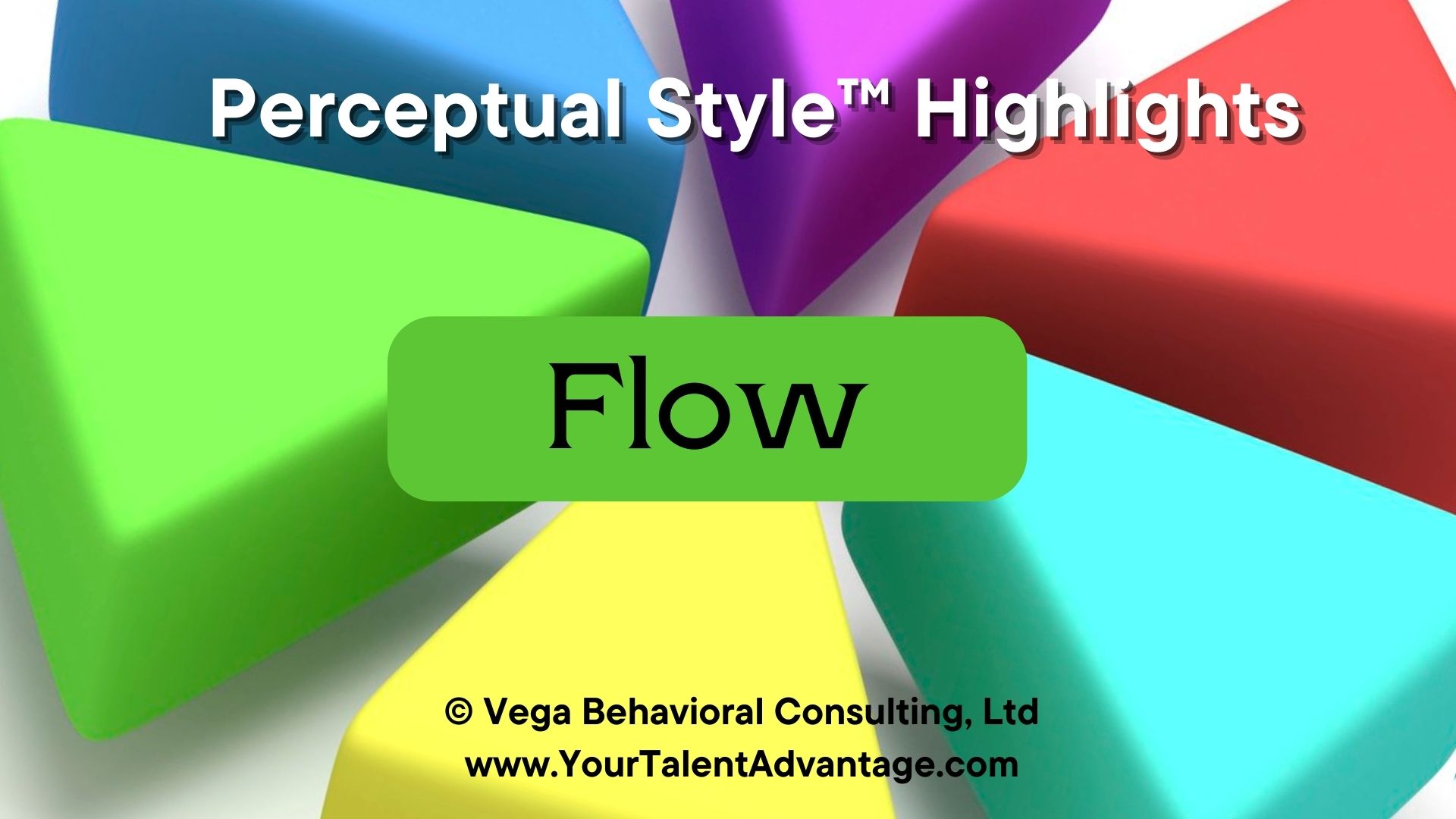
Flow Perceptual Style™ and Collaboration
Cultivating Connection in Collaboration
Collaboration isn’t just about sharing tasks — it’s about building relationships, fostering trust, and creating a sense of shared purpose. Whether at home, at work, or in your community, collaboration is the key to achieving meaningful results together.
But effective collaboration isn’t one-size-fits-all. Your natural approach to collaboration is shaped by your Flow Perceptual Style,and you bring a unique ability to foster harmony, connection, and cohesion to every group you’re part of.

Why Collaboration Matters
Humans are wired for connection. Studies in psychology and sociology repeatedly show that we thrive in community and struggle in isolation.
Collaboration isn’t just about sharing tasks — it’s about sharing ideas, energy, and purpose.
When done right, collaboration:
-
Builds trust and mutual respect.
-
Strengthens relationships and loyalty.
-
Encourages smoother group dynamics.
But let’s face it — collaboration isn’t always effortless. Differences in perspectives, approaches, and communication styles can cause friction. That’s where understanding your Flow Perceptual Style comes in.
Your Collaborative Superpowers
With the Flow Perceptual Style,you build collaboration from the inside out — fostering connection, trust, and emotional alignment. Your intuitive awareness of people and group dynamics helps create a steady, supportive environment.
You thrive in collaboration when you can:
-
Foster trust and emotional safety so everyone feels seen, valued, and heard.
-
Build group cohesion by nurturing loyalty, connection, and shared purpose.
-
Address tensions or misalignment early, guiding the group back to harmony.
-
Coordinate people and progress with a calm, open presence that keeps things flowing smoothly.
Your gift for creating stability through connection transforms collaboration into a space where people feel invested, supported, and genuinely part of something bigger.


Why Understanding Your Perceptual Style Matters
Collaboration is one of the most powerful tools for success, but it’s not always smooth sailing. Misunderstandings, mismatched approaches, and clashing priorities can derail even the most well-intentioned efforts.
When you understand your Flow Perceptual Style,you can:
-
Leverage your natural strengths to create harmony in group settings.
-
Avoid frustration by recognizing where your approach may differ from others.
-
Foster trust and openness within diverse teams.
-
Navigate group challenges with calm and clarity.
When you embrace your strengths, collaboration becomes less about managing friction and more about creating meaningful, productive connections.
Take Action: Discover Your Perceptual Style
The Perceptual Style Assessment™isn’t just about identifying your collaborative strengths — it’s about unlocking practical tools and insights to thrive in every group setting.
When you take the assessment, you’ll receive:
-
A 45-page action guide titled Celebrate You!specifically about the Flow Perceptual Style.
-
In-depth insights into your natural collaboration strengths and tendencies.
-
Practical strategies for fostering harmony, trust, and cohesion in any group.
Stop struggling with collaborations that wear you out. Start building trust, connection, and harmony in every interaction.

Explore the Six Perceptual Styles and Collaboration
Curious about how different Perceptual Stylesapproach collaboration? Explore below for insights into each unique style:
Understanding your style is just the first step. When you learn to appreciate the strengths others bring to the table, collaboration transforms from a challenge into an opportunity.
Frequently Asked Questions about the Flow Perceptual Style and Collaboration
What does it mean to have the Flow Perceptual Style™?
You experience life as interwoven and relational. You notice how the past gives shape to the present — and how honoring that lineage steadies what comes next. You translate inherited meaning and shared values into today’s choices to help yourself and those around you feel grounded, seen, and safe as things evolve.
What are some of the natural strengths of Flow?
You create belonging and protect what holds people together. You listen with patience, sense the emotional weather, and uphold shared values when they’re tested. Your empathy is steady (not showy) and you offer calm presence, careful timing, and gentle boundary-keeping that preserves dignity — for individuals and the whole community.
How does the Flow style show up in Collaboration?
You build cohesion. You ensure voices are heard, notice unspoken barriers, and encourage supportive rhythms so work feels shared — not forced.
What are a few common blind spots—and how can I manage them?
You may sidestep needed tension to keep peace. Try naming the concern gently (“Here’s what I’m noticing…”) and propose a small, safe next step. You may over-give. Set soft boundaries (“I can do X this week; Y will need to wait”) to protect your energy and consistency.
How can understanding my Flow strengths help me thrive?
Awareness lets you lead with steadiness and heart. You can choose environments that value relationship and continuity, use your gift for cohesion to guide teams through change, and set humane boundaries that keep your support sustainable. Your quiet reliability is often the glue that makes bold outcomes possible.
Can my Perceptual Style change over time?
No - your Perceptual Style is innate. What evolves is how you apply it. With awareness and intention, your natural strengths become more flexible, confident, and influential.
 Lynda-Ross Vega has been fascinated by what makes people tick since she was a child. Her curiosity about human diversity and how to bring out the best in each person led her to a multifaceted career in the financial, technology, and behavioral consulting sectors. She has played roles that include top executive, entrepreneur, business owner, consultant, coach, daughter, sister, wife, stepmother, and grandmother.
Lynda-Ross Vega has been fascinated by what makes people tick since she was a child. Her curiosity about human diversity and how to bring out the best in each person led her to a multifaceted career in the financial, technology, and behavioral consulting sectors. She has played roles that include top executive, entrepreneur, business owner, consultant, coach, daughter, sister, wife, stepmother, and grandmother. Gary Jordan, Ph.D., has over 40 years of experience in clinical psychology, behavior assessment, individual development, and coaching. He earned his doctorate in clinical psychology from the California School of Professional Psychology—Berkeley in 1980.
Gary Jordan, Ph.D., has over 40 years of experience in clinical psychology, behavior assessment, individual development, and coaching. He earned his doctorate in clinical psychology from the California School of Professional Psychology—Berkeley in 1980.




